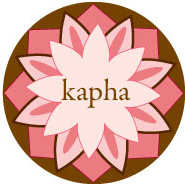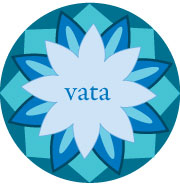
You could say we are not all created equal… Some of us run hot, some of us run cold or dry, and some of us spend ample amounts of time lounging in the realm of stagnation. When winter comes, nature levels the playing field by making everybody cold. Depending on where you live… it could be a chill in the air, frosty morning blues, or steady days of rain, snow, and ice. The call for warmth at this time of year tends to be universal, and nothing warms the body like a hot bowl of soup.
In Ayurvedic medicine, the 5,000-year old science rooted in the elements of ether, air, fire, water, and earth, winter represents the elements of earth and water. It’s a time when hibernation comes easy (bears do it) and it’s natural to eat a little more than usual, to put on a few extra pounds and to insulate the self against the rough and tumble go-go-go of the outside world. This time of year lasts a little less than three months, from late December to mid March (only one month to go!), and is referred to as the Kapha time of year.
Kapha is one of the three doshas, along with Vata and Pitta in Ayurvedic medicine. The doshas are a simplified expression of the five elements I spoke of above. Vata embodies air and ether, Pitta represents fire and water, and Kapha encompasses the elements of water and earth. The doshas are essentially forces of nature that accumulate, and go out of balance easily when concentrated, agitated or exposed, both in the natural world and in the body. For example, winter is a time of year when water and earth (i.e. Kapha) dominates. There is a natural accumulation of water (wet, cool) and earth (heavy, dense) in winter, and it is a time that Ayurveda associates with Kapha qualities. Some of these qualities will feel familiar if you tend to accumulate a lot of Kapha on an individual level. Kapha qualities include heavy, wet, damp, slow, dense, full, sluggish, oily, and cool – like mud.
Ayurveda’s main premise is to bring balance to the body, mind and spirit – primarily through a focus on optimum digestion. Winter is a time of year when stagnancy tends to build rapidly in the body. If you are someone who already tends to feel cold, heavy or slow, it’s even more important that you engage in activities that warm up your blood and get your heart pumping. To combat common winter-induced sluggishness, for example, Ayurveda recommends warming the body by moving it regularly (i.e. engaging in a vigorous yoga practice or taking a brisk walk) and by fueling digestive fire with foods like well-spiced soups and stews.
Every dosha will thrive on a slightly different spice palate. Vata – which tends to be cold and dry – needs warming spices like cardamom, basil and ginger to heat their soups. Pitta’s natural heat tends to sustain throughout the year, so Pitta does best with anti-inflammatory spices like turmeric, peppermint, fennel seed and coriander. Because of its slow and sluggish nature, Kapha requires the most stimulating spices, like cayenne, black pepper, garlic and rosemary.
In general, Kapha – and everyone living in a Kapha climate like winter – thrives on foods that are warming, energizing, nourishing, hydrating and that support strong circulation and elimination of toxins. Kapha rules the “water-works” of the body – the kidneys, bladder and the lymphatic system – so it’s especially important to eat foods throughout the Kapha season that nourish these organs and systems. Teas, hot broths and stews will do the trick. But is sure does sound like soup to me! Here is one of my all time favorite recipes:
Carrot-Squash-Sweet Potato Soup
VK-P=
Preparation Time: 45 minutes
Serves 4 to 6
8 Cups Purified Water
1 pound Organic Carrots
1 pound Butternut Squash or any winter squash variety
1 Large Sweet Potato
2 teaspoons high-quality, mineral-rich salt such as Celtic sea salt or Himalayan salt
3 Dried Bay Leaves
1 Tablespoon Ghee or Coconut Oil
½ Bunch Green Onions, roughly chopped (use the whole stalk)
2 Cloves Garlic, minced (omit for Pitta)
1-inch Fresh Ginger Root, washed and minced
1 teaspoon Ground Nutmeg
1 teaspoon Cinnamon (omit for Pitta)
1 teaspoon Dried Parsley, Basil or Tarragon Leaves
1 Tablespoon Miso Paste (any variety)
Dash of Apple Cider Vinegar or fresh Lemon Juice
In a large stock pot, bring the water to a boil. Chop the carrots, squash and sweet potato into large 2-inch chunks. Add them to the water along with the salt and bay leaves. Cover. If you use butternut squash, it’s fine to leave the skin on. For other winter squashes, you may want to peel them first, before adding them to the boiling water.
Allow it to cook over medium-high heat for about 20 minutes or until you can easily pierce the vegetables with a fork.
Meanwhile, in a separate medium-sized saucepan, sauté the green onions, garlic and ginger in ghee over medium heat for 3 to 4 minutes, or until the onions are soft and translucent. Add this mixture to the soup. Remove the soup from heat, remove the bay leaves and then add all of the remaining ingredients.
Puree the soup in a food processor or high powered blender and serve hot. For Pitta, garnish with fresh or dried peppermint leaves.
More Than Soups:
Although chamomile is a summer flower, chamomile tea is known for its especially nurturing effect on kidneys. Simple herbal broths – like miso or vegetable – can easily be infused with immune boosting additions like garlic and ginger. Since dairy tends to digest pretty heavy, and can lend to an increase of mucous production which is already at a high in winter, dairy-based soups can be easily substituted with non-dairy base alternatives like coconut milk. All kinds of stews, provided they are warm and filled with as many fresh vegetables as you can get your hands on, warm the belly – and perhaps more importantly, the spirit!
Gluten-Free Soup “Cookies”
VPK-
Preparation time: 30 minutes
This recipe is my take on a savory, gluten-free scone that just happens to taste amazing with soups.
1 ½ cups brown rice flour
1 cup garbanzo bean flour
1 cup tapioca flour
1 tsp. baking powder
1 tsp. baking soda
2 tsp. xanthan gum
2 tsp. dried sage or 1/4 bunch fresh sage, chopped fine
½ tsp. brown mustard seeds
1 small red onion
2/3 cup maple syrup
½ cup, plus 1 tsp. ghee at room temperature
½ cup almond milk
1 tsp. apple cider vinegar
1 tsp. vanilla extract or other flavor extract
½ tsp. celtic sea salt
Preheat the oven to 350 degrees. Sift together dry ingredients and set aside.
In a small skillet, heat 1 tsp. ghee over low-medium heat. Add chopped red onion, sage and brown mustard seeds. Sautee for 2-4 minutes, until onion is slightly soft and brown mustard seeds start to pop.
Whisk the onion mixture with other wet ingredients together in a large mixing bowl. Gradually add the dry ingredients to the wet ingredients in stages. Blend thoroughly.
The batter should be dense. If it is too dense, add teaspoons of almond milk until all the flour is mixed in and the batter is still rather stiff. Form Soup Cookies into 2-3 inch mounds, shaping them with wet hands.
Bake at 375 degrees for 15 – 20 minutes, until Cookies form a thin crust and a toothpick comes out clean from its center. Cool on a rack before serving.









